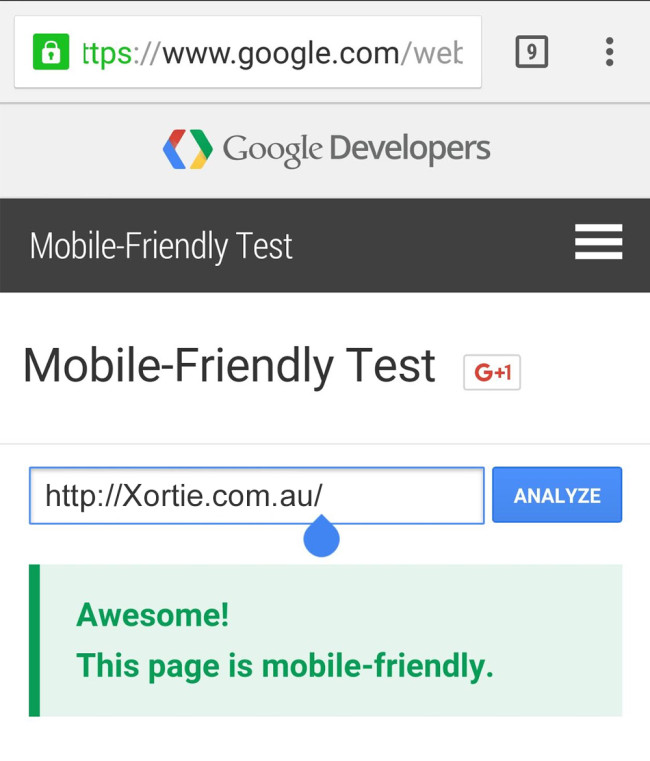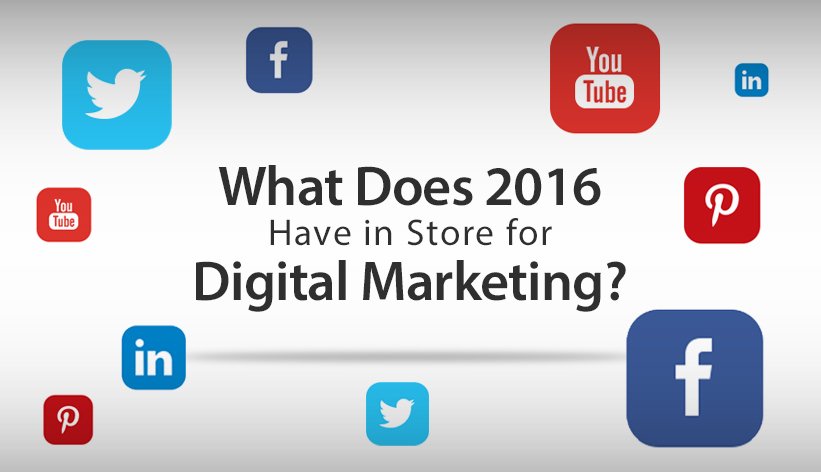5 Digital Marketing Trends for 2016
What does the future hold for digital marketing? Be aware of these five foreseeable happenings and prepare your business and marketing team for an effortless ride on the wave of change.
1 Mobile will continue to thrive.
The reign of mobility is probably the most inevitable for 2016. Ericsson’s 2015 Mobility Report reveals that there are 3.65 billion mobile device subscriptions worldwide. It is estimated to reach a whopping 6.75 billion by 2021, proof that mobile is here to stay. With users picking up their smartphones, tablets, or mobile PCs (e.g., laptop) even when desktop computers are easily within reach, websites with mobile-friendly content will be the ultimate go-to for information.

Is your website mobile-friendly? Analyze your web pages using this test from Google Developers.
So has your digital team geared your business up for mobile success? If you have not optimised your website for various mobile devices and incorporated more mobile-compatible content such as embedded videos, now is definitely the time to do so.
2 Newer apps will gain traction.
As millennial and post-millennial populations swell, so will the popularity of the apps that are all the rage among these age groups. A survey by Statista discloses that LINE and SnapChat topped the list of the world’s fastest growing social and messaging apps last year. A number of companies have gone ahead and infiltrated this up-to-the-minute market by launching character stickers and short videos, which their followers readily devoured.
Does your business target a young generation of consumers? Better know which apps they own and how each app’s unique format can put your campaign message on view.
3 Time spent in-app will lengthen.
Facebook continues to lead the social media game; however, we are now seeing people spending more hang-out time on other more user-targeted apps. It’s no wonder, therefore, that the top social and messaging apps are working twice as hard to keep their followers from swiping away to go elsewhere. Soon we will see more in-app activities such as buying, something Pinterest already incorporated into its platform in the form of the ‘Buy it’ button, giving Pinners an extra option to purchase pinned items without leaving the app. Also to take off are in-app publications, like Facebook’s Instant Articles, that lets users read features without linking to external sources. Word has it that Twitter, too, will embrace long-form content to allow Tweeters more freedom of expression and consequently, longer engagement.

Twitter users can now purchase a product without ever leaving the app.
Now that apps are encouraging users to stay put, how can your company maintain good traffic to your website? More importantly, how can you take advantage of these in-app features to earn your business mileage and conversions?
4 Content will continue to be more user-friendly.
Because more people now prefer mobile to desktop, multitasking has never been easier. To better serve the needs of this on-the-go population, content will not only be optimised in the sense that it will fit the mobile screen format; it will also be quicker to search, digest, and utilise. For one, the growing dependence on digital assistants like Apple’s Siri, Microsoft’s Cortana, and Google Now will lead to the creation of more conversational content. It is likely then that websites that naturally integrate long-tail keywords into relevant and colloquial content will fare better at search rankings and conversions. Video, which used to be only an accompaniment to text, will also have its share of the limelight as businesses try to cater to audiences who prefer more visual means of processing information.

Embedded videos are already a common sight on people’s Facebook timelines.
As search engines like Google improve on providing users with exactly what they need, how can your SEO efforts move away from the search-engine-pleaser mentality? How can it keep with the true mission of online search and consequently benefit from it?
5 Consumers will gain more control of what they want to see.
Although not a new trend, blocking online advertisments has not really caught up among average internet users–that is, until Apple approved last year an ad-blocking software. Before that, at least a million Australians have already been reaping the benefits of ad-free content; more are sure to follow suit this year. Several companies have begun remedying this ‘defiance’ by denying content to readers with ad-blocking apps running on their devices. Despite these ‘corrective’ efforts, there is no doubt that online customers will continue to use ad-blocking tools. Either that or they will flock to sites that can provide them with the information they need sans the obligatory ad viewing.
Opinion is divided as to whether such a move will herald the end of advertising and free content, but one thing is for sure: ad-blocking will change the way brands are marketed online.
Is your business ready to adapt to these recent and impending developments? What other digital marketing trends do you see on the horizon?

